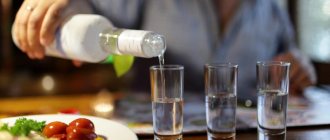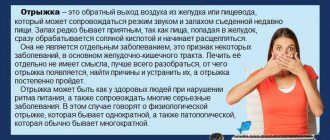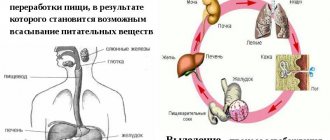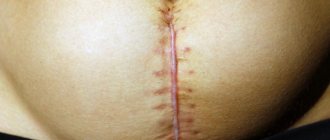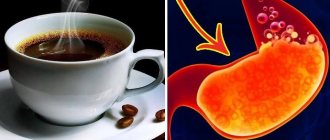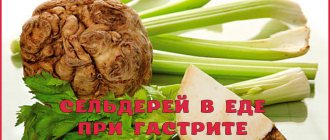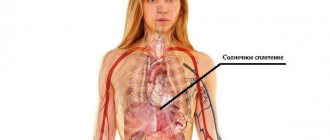Gastritis is an inflammation of the inner lining of the stomach. Depending on the severity of the process, it covers not only the mucous membrane, but also extends to the submucosal and muscular layers. This determines the shape of gastritis.
In diagnosis, it is important that pain during gastritis is not caused by damage to the mucous membrane. It does not have pain receptors - nerve endings that carry signals to the brain. Therefore, such a sign as pain indicates a dysfunction of the muscle layer (stretching, inadequate contractions of individual groups of fibers).
Who has a stomach ache?
Statistics show that in the Russian Federation, 85% of the population has signs of gastritis. The most common people who suffer from stomach pain are:
- with a disrupted diet (long breaks in eating, overeating, starvation diets);
- addicted to fast food, fatty meat dishes, spicy seasonings, coffee lovers;
- alcoholics and heavy smokers.
A special group of adults are those who are afraid to see a doctor and prefer to independently take medications recommended by a pharmacist, neighbors, or friends. As a result of long-term use of drugs for headaches, for the treatment of joints containing salicylic acid, non-steroidal drugs, gastritis occurs.
At the same time, the stomach cannot withstand the negative combined effects of chemical irritants. How the stomach hurts with gastritis is well known to emotional and nervous patients who do not know how to deal with stress, suffer from insomnia, and changes in blood pressure.
Pain in the stomach (gastralgia) occurs not only with gastritis, but also accompanies gastroptosis (prolapse of the organ), cardiospasm of the esophagus, diseases of the liver, intestines and pancreas.
The digestive process is so connected with the functioning of the entire system that a disease of one of the organs causes a malfunction in the others, and inflammation quickly spreads. In 75% of patients, gastritis does not occur in isolation.
Alternating a starvation diet and subsequent overeating disrupts the functioning of the stomach and leads to inflammation
Diagnostic signs
If the patient describes the symptoms and nature of pain typical of gastritis, the gastroenterologist will refer him for esophagogastroduodenoscopy. Visual examination using endoscopic equipment helps to establish the degree of damage to the mucosa, the type and form of pathology.
Diagnostic signs:
- redness of the mucous membrane is visible inside the stomach;
- the shell becomes thicker in places;
- ridges grow on the wall;
- the pits of the organ deepen;
- in advanced cases, areas with degenerated glandular tissue, scars or erosions are noticeable on the mucosa.
It is imperative that a patient with gastritis and stomach pain be tested for Helicobacter pylori infection and the acidity level determined. Ultrasound and laboratory tests of blood, feces, urine, and gastric contents are also performed. But the results of endoscopy are the final basis for drawing up a treatment plan.
Nature of pain
The stomach is projected onto the uppermost part of the abdomen, closer to the central zone (epigastrium). Patients indicate the place where gastritis hurts in the area between the joints of the lower ribs and a little lower.
Depending on the body type of a particular person, the stomach has a more horizontal or vertical (hanging) position. Accordingly, stomach pain with gastritis can also occur in the right and left hypochondrium or in the navel area.
The nature of the pain syndrome is described by patients as constant aching. At the beginning of the disease, pain occurs immediately after eating or excitement and does not subside throughout the day. In chronic cases, they do not depend on the time of eating. With each exacerbation, the pain becomes more intense and more difficult for patients to bear.
What types and locations are there?
Aching, dull, bursting pain of moderate intensity is associated with overeating or slow evacuation of gastric contents. Intense sharp, aching, stabbing sensations are caused by stomach spasms. With chemical irritation, the pain has a burning, sore character.
Typically, stomach discomfort due to gastritis appears 15-45 minutes after eating. Hunger pains that go away after eating are more typical for duodenitis or duodenal ulcers.
In most cases, with gastritis, pain occurs in the upper abdomen, under the sternum - in the epigastrium. Pain in the left hypochondrium is also characteristic. Discomfort in the right hypochondrium may be a consequence of inflammation of the pyloric part of the organ directly adjacent to the intestine, or the duodenum itself.
With gastritis, an atypical pain syndrome occurs. A burning sensation behind the breastbone may be a sign of acidic stomach contents refluxing into the esophagus (gastroesophageal reflux). Pain radiating to the back is considered an unfavorable sign, as it often indicates the development of a peptic ulcer.
In some cases, inflammation of the stomach causes pain along the intestines. The reason for this is the close relationship between the organs of the digestive tract. The pathology of one of them disrupts the work of the underlying departments. If the food in the stomach is not digested to the required extent, then the intestines will also not be able to completely process it. After all, it does not form the necessary enzymes. For this reason, secondary pain due to gastritis can be localized even in the lower abdomen.
Important! In case of atypical variants of pain syndrome, more dangerous diseases are first excluded. With a burning sensation behind the sternum - angina pectoris or myocardial infarction, with back pain - aortic aneurysm, spinal damage, intervertebral disc herniation, with pain in the right hypochondrium - biliary colic, around the navel - inflammatory or oncological diseases of the intestine.
How does pain depend on acidity?
Patients familiar with diagnostics must undergo pH testing. This method determines the acidity of gastric juice and its fluctuations during the day. In gastroenterology, it is customary to include symptoms of pain in stomach diseases in syndromes of acid formation disorders. This explains the origin of the accompanying symptoms of gastritis.
With increased acidity
Hyperacid syndrome is characterized by increased production of hydrochloric acid and hyperactivity of pepsin, which increases muscle contractions of the wall (motility). This is typical for damage to the pyloric zone of the stomach in chronic gastritis.
The pain is intense and paroxysmal in nature due to spastic contractions of the muscle layer and pyloric sphincter. Located in the epigastrium and hypochondrium on the right, extending to the back. To select treatment, it is important that the pain mechanism is associated with excessive activity of the vagus nerve, therefore, in order to alleviate the patient’s condition, it is necessary to remove the influence of the vagus.
The type of secretion is accompanied by heartburn and burning. Due to gastroesophageal reflux, acid refluxes into the cardiac zone of the esophagus with the development of esophagitis. Patients complain of burning pain in the chest, pain when swallowing, and a feeling of a “lump in the throat.”
If acid is normally necessary to protect the organ from pathogenic bacteria, support the production of pepsin and begin the breakdown of proteins, then its deficiency or excess has a detrimental effect on the mucous membrane
Night and hunger attacks are associated with the ongoing unnecessary synthesis of hydrochloric acid and the addition of inflammation of the duodenum.
Pain in hyperacid gastritis is relieved by:
- warm heating pad;
- drugs with antispasmodic effects (vagolytics);
- by any means that reduce acidity (eating, antacids).
Gastritis causes signs of dyspepsia: sour belching, nausea, spastic constipation with feces in the form of “sheep” discharge, vomiting, which relieves pain. Patients can independently relieve pain by inducing vomiting. This method removes accumulated acid and relieves pyloric spasm. The hyperacid state does not affect appetite, patients do not lose weight.
When acidity decreases
With gastritis with low acidity (hypoacid), acid synthesis is reduced until complete cessation (achylia) due to atrophy of the parietal cells. The muscle layer loses tone, the wall of the stomach stretches.
Medicines for stomach pain
The mechanism is characteristic of chronic atrophic gastritis. Changes are also observed in the neuroreceptor apparatus, which normally responds to increased pressure in the stomach.
This contributes to the occurrence of pain even with normal wall tone or slight stretching.
The upper abdomen begins to hurt immediately after eating or after 30–40 minutes. The pain is characterized by dullness, a feeling of heaviness, lack of clear localization and irradiation. When the food leaves the stomach (after 2–3 hours), the pain subsides on its own.
Relieving pain from gastritis with low acidity is much more difficult. Prokinetic drugs (Motilium) usually help. Accompanying similar manifestations of dyspepsia, as with hyperacid gastritis, but the belching does not contain acid.
More pronounced intestinal symptoms:
- flatulence;
- rumbling in the stomach;
- diarrhea.
ethnoscience
Not all advice from traditional healers is equally safe. Some recipes should not be tried on yourself under any circumstances. But there are remedies whose effectiveness is also recognized by official medicine. Sometimes they are able to relieve pain without the use of drugs.
- Kisely . Thanks to their enveloping properties, they protect the stomach from acid. Any natural jelly is effective: fruit and berry, oat, milk.
- Milk . It helps well with hyperacid and erosive gastritis, as it has antacid properties.
- Oils - sea buckthorn, olive, linseed. They create a thin protective layer on the surface of the mucous membrane, reducing the effect of hydrochloric acid on pain receptors.
- Soda. With hyperacid gastritis, you can quickly relieve pain by drinking ½ teaspoon of soda dissolved in a glass of water. Due to its alkaline properties, it neutralizes hydrochloric acid. However, you should not often resort to this method due to the development of rebound syndrome. To be fair, it is worth noting that it also appears against the background of long-term use of certain medications.
Traditional recipes can be used only for moderate exacerbation of chronic gastritis or as an emergency when the necessary drug is not at hand.
Pain in different forms of gastritis is varied and depends not only on the type of inflammation, but also on the individual characteristics of the body and the pain sensitivity threshold. The main thing to remember is that simply relieving pain is not enough. To prevent it from coming back again, you need to monitor your nutrition and follow a gentle diet. Then all the tips listed above may not be useful to you.
The connection between gastritis and infection
Can gastritis accompany infectious diseases? Inflammation of the stomach is necessarily observed in foodborne infections, poisoning with toxic substances, and in the clinic of intestinal infections (salmonellosis, dysentery, cholera).
The manifestations are called gastroenteritis. Unlike somatic gastritis, in addition to pain and acidity disorders, intoxication plays a significant role in the clinic. In patients:
- temperature rises;
- headache and joint pain;
- nausea and vomiting are more pronounced;
- severe weakness;
- insomnia.
Pain occurs not only in the epigastrium, but also in the left and right sides, around the navel. There is diarrhea mixed with mucus and blood.
The stomach contents are examined for bacterial contamination by tank. culture of material from vomit
In recent years, serious attention has been given to viral gastroenteritis with influenza and herpes. In patients with a serious condition, signs of internal bleeding appear (pale skin, rapid pulse, drop in blood pressure). Unfortunately, it is extremely difficult to deal with. Mortality remains high.
Ways to relieve spasms
Relieving pain is an important component of providing assistance during the period of exacerbation of gastritis. You can relieve spasms yourself by using proven methods of treating the stomach. Effective methods include taking medications and using traditional recipes.
Drug therapy
Elimination of unpleasant symptomatic signs is impossible without taking medications. Proven medications are:
- antacid drugs;
- painkillers, analgesics;
- enzyme preparations;
- blockers;
- antiseptics.
Antacids
Antacid medications help normalize the level of stomach acidity, relieve the feeling of heaviness, get rid of heartburn, bloating, and restore the mucous membrane of the digestive organ as a result of pathological damage. The products differ in the degree of absorption. Absorbed antacids quickly and effectively neutralize the level of hydrochloric acid in the stomach, but the effect of the drug is short-lived. Taking rapidly absorbed drugs can lead to increased acidity and exacerbation of the disease. Non-absorbable drugs with a long-lasting effect have a gentle effect on hydrochloric acid. Antacids include:
- Almagel gel;
- Maalox suspension, Phosphalugel;
- tablets Gastal, Rennie, Vikair, Vikalin.
Antacids should be taken 60-90 minutes after eating. The drugs help relieve early pain, eliminate heartburn, and protect the mucous membrane.
Painkillers
Analgesics relieve spasms and tone the muscles of the stomach. Painkillers are not the main medications for the treatment of gastritis. The main components of analgesics that block nerve impulses are papaverine and drotaverine. Effective antispasmodics are:
- tablets No-Shpa, Spazmolgon, Maksigan, Tempalgin;
- Nurofen capsules.
Taking Analgin and Ibuprofen for gastritis is contraindicated. Strong painkillers cause damage to the irritated gastric mucosa. Antispasmodics are contraindicated in the presence of internal pathologies: liver disease, kidney disease, circulatory disorders, intestinal infection, Crohn's disease, stomach ulcer. It is necessary to stop using painkillers for women during pregnancy and breastfeeding. During persistent pain, doctors may prescribe narcotic analgesics - Morphine. But strong medications are not suitable for self-relief of spasms.
Enzyme preparations
Medicines containing enzymes help normalize the digestion of food consumed at low acidity. The main substances of medications break down food into easily digestible components, so the medication should be taken during or after eating food. Effective enzyme preparations are:
- Festal;
- Mezim;
- Pancreatin;
- Creon.
Medicines are contraindicated in acute form of pancreatitis, sensitivity of the body to the components of the drug.
Blockers
Painful symptoms are accompanied by nausea and vomiting. To relieve unpleasant symptoms, you can take blockers: Motilium tablets, Cerucal. To reduce the level of stomach acidity, it is necessary to take anticholinergic drugs.
How does the nature of pain change when gastritis turns into an ulcer?
Patients with a long history of the disease should notice what kind of pain with gastritis usually bothers them during an exacerbation and how they change. In case of pain ulcer formation:
- become much more intense;
- described as "cutting";
- clearly tied in time to food intake;
- have seasonality of exacerbations in spring and autumn.
Because the ulcers bleed, occult blood is detected in stool tests. When an ulcer perforates into the abdominal cavity, the pain is dagger-like in nature, accompanied by shock and peritonitis. A stomach ulcer may first appear as bleeding with vomiting blood and black, loose stools.
You can't do anything on your own. Just provide the patient with peace and prohibit movement. If the emergency doctor decides to hospitalize you, you should not refuse. The consequences can be life-threatening.
Gastritis of corrosive type
In this case, it is customary to talk about damage to the deep layers of the organ’s mucosa. The main reason for the development of the disease is the penetration of toxic chemical compounds into the stomach, as a result of contact with which healthy tissues get burned.
Regarding how it hurts. Gastritis of this type is characterized by unbearable sensations. The pain is so acute that it is almost impossible to endure. A person tries to take a forced position in order to weaken its manifestations.
Associated symptoms:
- Headache.
- Burning in the chest area. It is so strong that the person feels as if he is on fire.
Ignoring warning signs leads to ulcers and internal bleeding.
What diseases should be distinguished from gastritis pain?
The origin of gastralgia is not necessarily associated with inflammation (gastritis). Similar pains are observed in other diseases. Gastroesophageal disease is formed when the stomach is damaged in the upper zone, cardia and lower sphincter of the esophagus. The cause is usually an overfilling of the stomach, an increase in pressure in it.
This causes the bolus to be thrown back into the esophagus. But it already contains acid. It irritates the mucous membrane of the lower esophagus and causes chest pain immediately after eating. Characterized by severe heartburn, sour belching, hoarseness due to contact with the vocal cords during regurgitation.
A change in the nature of pain is a reason to go to the hospital immediately
Peptic ulcer of the esophagus can be considered as a consequence of reflux esophagitis. The pain becomes persistent, very similar to heart pain. To differentiate, an ECG study is always performed. Perforation causes dangerous complications with damage to the heart sac.
With a hiatal hernia, part of the stomach with the adjacent esophagus enters the supradiaphragmatic space. Abnormal mobility is explained by:
- expansion and weakness of the diaphragmatic muscle ring around the esophagus;
- a state of prolonged increase in pressure in the abdominal cavity with ascites, chronic cough, excess weight;
- muscle atrophy in elderly patients.
Severe pain indicates a dangerous infringement of part of the organ in the hernial canal.
What is gastritis and how dangerous is it for humans?
Gastritis is nothing more than damage to the mucous membranes of the stomach walls, which occurs for a variety of reasons. Most often, pathogenic changes in the membranes of the organ occur due to regular poor nutrition, alcohol abuse, as well as due to chronic stress and nervousness.
In the medical community, gastritis is not included in the list of particularly dangerous diseases. However, such a disease has its own specific characteristics. The problem does not pose a direct threat to humans while it is in the so-called “dormant” state.
In the absence of timely and correct treatment, gastritis becomes acute. The tissues of the mucous membranes of the stomach continue to become inflamed and destroyed. In the future, this leads to tissue degeneration and stomach cancer.
Important: When the stomach starts to hurt, this symptom already indicates the presence of a disorder in the gastrointestinal tract. If within two days the pain has not subsided, but only dulled, you must definitely contact a gastroenterologist.
How can you relieve pain with gastritis?
To eliminate pain, a complex of therapeutic measures is used to relieve inflammation. They are selected individually after examination. Pain is treated not only with medications; the doctor begins his recommendations with changes in diet and regimen.
Patients are recommended:
- stop smoking and drinking any alcohol, including beer;
- ensure a rational rest regime, breaks from work for lunch and snacks;
- walk more;
- try to protect yourself from stress with interesting activities, meetings, and, if necessary, drink light herbal sedatives in tinctures (motherwort, valerian, Novo-Passit);
- achieve good sleep.
You will have to exclude from the menu:
- all fried and smoked dishes from meat, potatoes, fish;
- hot sauces, mayonnaise;
- strong tea and coffee;
- chocolate and confectionery;
- fresh baked goods;
- sparkling water;
- homemade pickles and marinades.
In case of severe pain, it is better to refuse food for a day and limit yourself to drinking warm, slightly sweet water. For a few days you should go:
- for low-fat broths with white croutons;
- liquid porridge with water (oatmeal, buckwheat, rice);
- slimy soups made from vegetable broth and cereals;
- boiled meat dishes rolled in a meat grinder (meatballs, steamed cutlets, meatballs).
You should eat small amounts of food up to 6-7 times a day. Dried fruit compote, rosehip decoction, and oatmeal jelly are suitable for drinking.
Diet is the basis of therapy
Treatment
It is unacceptable to ignore existing symptoms. If your stomach hurts, what should you do? Gastritis is a pathology that is treated by a gastroenterologist. It is he who should be contacted when the first alarming symptoms occur. The specialist will collect anamnesis, conduct a physical examination and issue a referral for comprehensive diagnostics, based on the results of which he will determine further tactics for managing the patient.
Treatment of gastritis directly depends on the form of the disease. But in all cases, adherence to a strict diet is indicated. All food consumed should be as gentle as possible. It is unacceptable to eat food that is too hot or very cold. Food should be warm, pureed, and not contain spices. Only a small amount of salt can be added to dishes. Meals should be fractional. The diet must be followed even during remission.
One of the most important points of treatment is stopping smoking and drinking alcoholic beverages. Not a single diet or even the most effective medication will help cope with the disease if a person does not get rid of bad habits.
Treatment of acute gastritis, accompanied by a pronounced deterioration in health, requires emergency measures. In such cases, it is necessary to call an ambulance. Doctors carry out the following actions:
- Gastric lavage. This is carried out as long as the vomit contains food particles.
- Introduction of "Papaverine". The drug eliminates spasms and relieves pain.
- The introduction of drugs that relieve nausea and vomiting.
- In severe cases, antibacterial therapy is indicated.
Patients after emergency treatment are shown complete fasting on the first day. Subsequently, it is necessary to follow a gentle diet.
In 90% of cases, the “culprit” of chronic gastritis is the active activity of Helicobacter pylori. In this regard, the main goal of treatment is the destruction of the pathogenic microorganism. In addition to Helicobacter pylori, symptomatic therapy is carried out aimed at relieving pain, heartburn, and belching.
Localization of painful sensations
Most often, discomfort appears in the epigastric zone. This is an area in the upper part of the abdominal cavity. Acute sensations are characteristic of severe forms of gastritis. How does it hurt in this case? A person feels unbearable discomfort in the abdominal area. Painful sensations often radiate to the chest.
If it aches in the back (not a sharp pain like a dagger), this indicates that the back wall of the stomach is inflamed. A person unconsciously tries to adopt a position in which the intensity of sensations is weaker.
Other symptoms of chronic gastritis. How does it hurt in this case? The sensations are dull. Patients complain that they have aching in the stomach area.
Chronic gastritis is accompanied by the following symptoms:
- Feeling of fullness in the stomach.
- Severe heartburn.
- Belching.
- Nausea.
- Headache.
- Increased fatigue.
In addition, there is a constant unpleasant taste in the mouth.
How to relieve pain using folk remedies?
Pain syndrome due to inflammatory processes in the stomach can be relieved using folk remedies.
Cabbage juice
Cabbage juice can be obtained using a juicer. If it is not there, then you can grind the vegetable in a meat grinder, blender or cut it with a knife. The resulting mass must be squeezed through cheesecloth or a sieve. After this, the liquid can be consumed. A glass or enamel container is suitable for storing juice in the refrigerator. The product is allowed to be used for 1-2 days. During long-term storage, its effectiveness decreases, since the amount of vitamins is reduced.
It is recommended to take the vegetable drink on an empty stomach, starting with small portions - 2-3 tbsp. l., and gradually increasing the volume to 0.5-1 cup. The juice is drunk 3 times a day before meals for 1-1.5 months. The drink must be heated so as not to irritate the mucous membrane of the damaged organ. At the same time, it is forbidden to add salt or spices to the juice, which reduce its beneficial properties.
The product can be mixed with carrot or potato juice in equal proportions. The drink can cause gas formation, so you can prepare in advance: drink carrot juice to cleanse the intestines, perform enemas. Treatment with a cabbage drink helps relieve pain, eliminate nausea, and improve appetite.
Potato juice
Potato juice has an enveloping, analgesic and anti-inflammatory effect for gastritis. A small piece of raw vegetable can relieve heartburn. And for gastrointestinal diseases, the drink helps:
- increasing immunity;
- hemoglobin production;
- improving appetite;
- restoration of motor function of the stomach;
- normalization of the secretory function of the affected organ;
- scarring of ulcers and defects.
Potato juice is an effective diuretic, so if you have kidney problems, you should visit your doctor before using it. Fresh vegetable juice has beneficial properties for the digestive system.
The duration of therapy depends on the severity of the disease and the individual characteristics of the patient. The juice should not be taken daily for more than 10 days. Drink 0.5 glasses of the drink 30 minutes before eating. To prepare a medicinal liquid, you will need strong tubers that are free of mold, greenery, damage and rot.
For 1 serving you need 2-3 medium potatoes. Vegetables must be cleared of soil, washed thoroughly, doused with boiling water and peeled. The tubers are grated on a fine grater and the juice is squeezed out through cheesecloth or a sieve. The drink must be drunk immediately, because after some time it will lose its beneficial properties. To improve the taste of the liquid, you can add beet or carrot juice, honey and a little lemon juice.
Herbal decoction
To relieve pain, you can use a decoction of herbs. The intensity of pain may vary. They are caused by cramps or concentrated stomach juices that irritate the walls of the organ. The decoction helps reduce discomfort. To do this, you will need to mix sage, cumin, bloodroot and immortelle in equal quantities and add water to them.
The liquid should sit for 30-40 minutes. After this, the infusion must be filtered and drunk 100 ml 3 times a day. A cool place is suitable for storing the decoction. After a day of therapy, the pain intensity decreases. The duration of treatment is 7 days. During this time, the pain should completely disappear.
To prevent the decoction from irritating the gastric mucosa, it is recommended to warm it to 37°C before use. No less effective is a solution, the preparation of which requires a mixture of calendula flowers and St. John's wort or yarrow. The herbs need to be poured with boiling water, left for several hours in a dark place and consumed 80 ml 3-4 times a day.
Propolis tincture
The product is used as a disease prevention and for the treatment of gastritis. The tincture is sold in pharmacies, but you can prepare it at home. To do this you will need:
- 50 g propolis;
- 95 g alcohol 70%;
- Glass bottle.
The beekeeping product must be cooled in the refrigerator, crushed, washed with water and dried. In the future, propolis should be placed in a container, filled with alcohol and stored in a cool place for 2 weeks. The contents of the bottle must be shaken periodically to improve the interaction of the components. After this, strain the liquid and take 1 tsp. before meals during the day.
